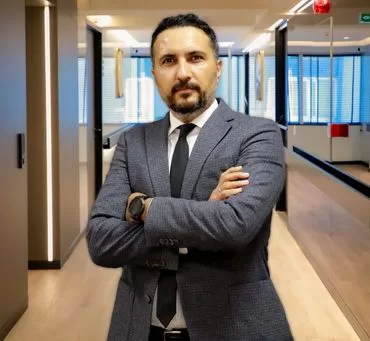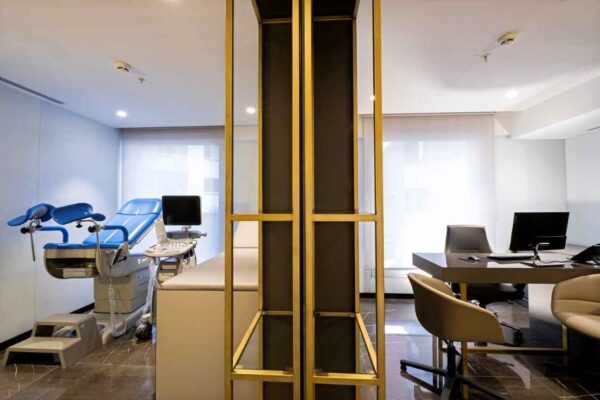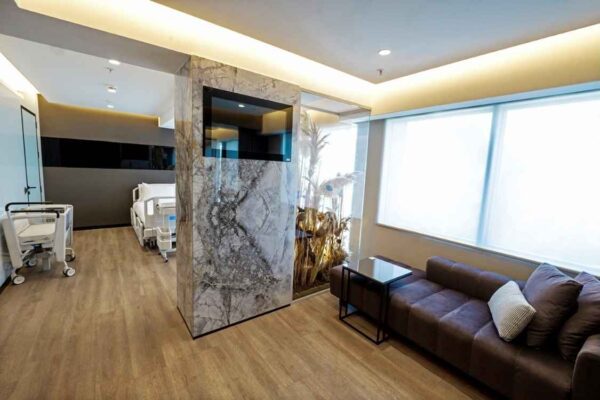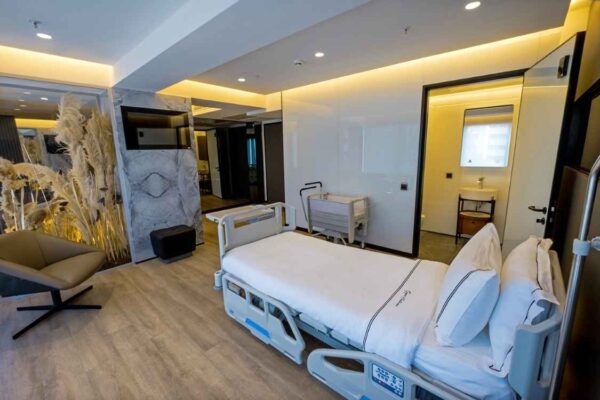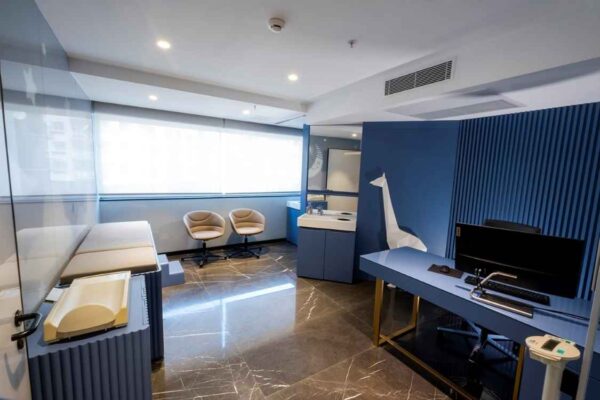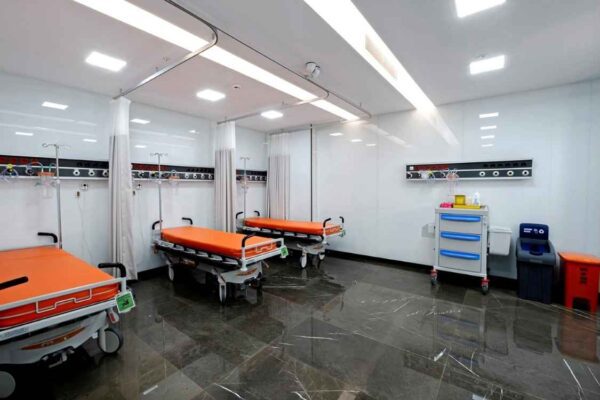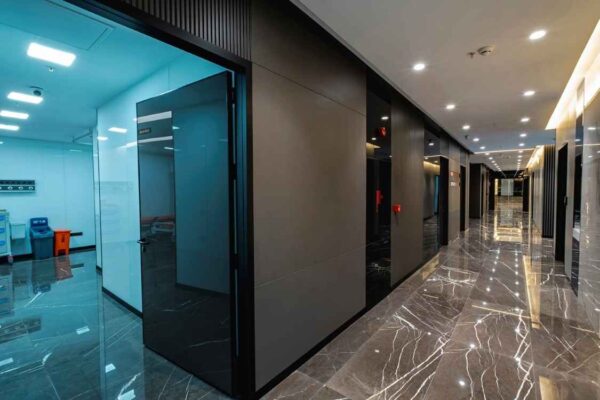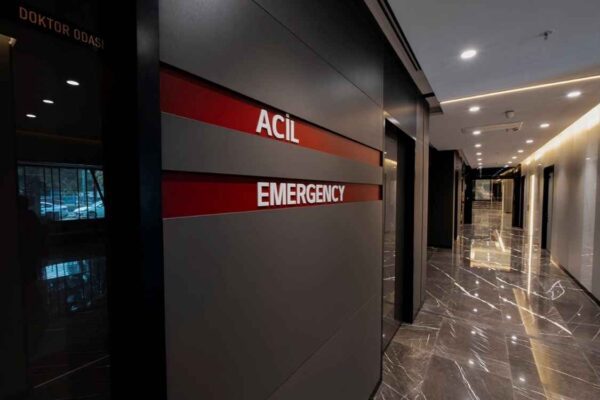Knee Arthroplasty, colloquially known as comprehensive knee substitution operation, constitutes a prevalent orthopedic undertaking that endeavors to supplant impaired knee joint components with synthetic constituents. This technique is generally prescribed for individuals plagued by chronic discomfort, rigidity, and diminished maneuverability stemming from knee arthrosis or alternative knee traumas that have proven resistant to conservative therapies. (1)
What is Knee Arthroplasty?
Knee Arthroplasty is an intricate surgical method, exchanging impaired knee joint components with fabricated materials crafted from metallic, plastic, or ceramic substances. The technique seeks to alleviate agony, reinstate flexibility, and enhance the aggregate functionality of the knee joint. Knee Arthroplasty is deemed among the most efficacious and triumphant orthopedic undertakings, with over 90% of recipients witnessing substantial pain mitigation and augmented function. (2) (3)
How is Knee Arthroplasty Performed?
Knee Arthroplasty is an elaborate surgical procedure necessitating orthopedic surgical acumen. The ensuing steps are customarily implicated in executing Knee Arthroplasty:
- Anesthetization: The individual is typically administered general or spinal anesthesia to induce numbness in the body’s lower portion.
- Incision: The medical expert creates an incision on the anterior facet of the knee, roughly 6 to 10 inches in length, to access the joint. The epidermis, subcutaneous tissue, and fascia are meticulously incised, and the quadriceps muscle is severed to unveil the knee joint.
- Excision of Impaired Tissue: The medical expert proceeds to excise the impaired tissue, encompassing cartilage, synovial membrane, and bone, utilizing specialized surgical apparatuses. The objective is the complete removal of impaired tissue while retaining as much healthy tissue as feasible.
- Osseous Preparation: The medical expert subsequently reconfigures the bones’ surfaces to prepare them for prosthetic constituents. The femur’s extremity is molded to accommodate the metallic femoral component, while the tibia’s apex is shaped to house the metallic tibial component. The patella’s posterior aspect may also be reconfigured to make room for a plastic patellar constituent.
- Prosthetic Component Installation: The metallic and plastic components are cautiously positioned. The metallic femoral constituent is affixed to the femur’s extremity, while the metallic tibial constituent is secured to the tibia’s apex. A plastic interposition is situated between the metallic constituents, facilitating seamless joint movement.
- Incision Sealing: Once the prosthetic constituents are established, the medical expert seals the incision with sutures or staples. A drainage mechanism might be inserted into the joint to extract surplus fluid and avert inflammation.
- Convalescence: The individual is typically transferred to a recovery chamber and intensely monitored for several hours. Analgesic medication and antibiotic treatment are frequently administered to manage discomfort and thwart infection. The individual may necessitate hospitalization for a few days to enable monitoring and rehabilitation. Physiotherapy is customarily advised to assist the individual in regaining strength, mobility, and knee joint range of motion. (4)
FAQs
In Turkey, the payment options for knee arthroplasty may vary depending on the hospital or clinic. Generally, payment can be made through credit card, bank transfer, or cash. It is recommended to consult with the specific healthcare provider to get detailed information about their accepted payment methods and any available installment plans.
No, knee arthroplasty operations do not typically come under insurance. While insurance coverage varies depending on the policy and provider, knee arthroplasty is often considered an elective procedure rather than a medically necessary one, making it unlikely to be covered by insurance. It is advisable to consult with your insurance provider for specific details.
Knee arthroplasty, or knee replacement surgery, may be cheaper in Turkey due to several factors. These include lower labor costs, competitive pricing by healthcare providers, favorable exchange rates, and government efforts to promote medical tourism. However, it is essential to consider various aspects, such as quality, expertise, and post-operative care, before making any decisions.
No, finance options are typically not available specifically for knee arthroplasty or any medical procedures. However, you may explore personal loans, health insurance coverage, or payment plans offered by healthcare providers to manage the cost of the procedure. It is advisable to consult with healthcare and financial professionals for specific advice.
In Turkey, there is typically no strict age limit for knee arthroplasty surgery. The decision for surgery is based on the individual’s overall health, severity of knee pain and dysfunction, and their ability to tolerate and recover from the procedure. Age alone is not a determining factor for eligibility.
The success rate of knee arthroplasty, or knee replacement surgery, is generally high, with positive outcomes for the majority of patients. However, as with any surgical procedure, there are risks involved, including infection, blood clots, and implant-related complications. The specific chance of something going wrong varies depending on individual factors and the surgeon’s expertise. It’s best to consult with a qualified orthopedic surgeon to assess your specific situation.
While knee arthroplasty surgery is generally safe and effective, there are potential complications and risks associated with the procedure. These may include infection, blood clots, implant loosening, stiffness, persistent pain, and nerve or blood vessel damage. It is important to consult with a healthcare professional for a comprehensive understanding of potential issues.
Our Team
Our Hospital
Atilla, Halide Edip Adıvar St.
No:57, 35270 Konak/İzmir




